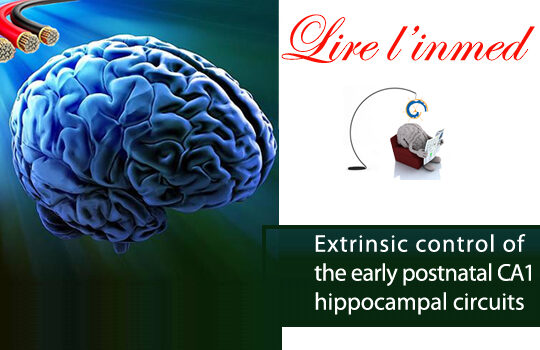
Plug & Play. Areas of our brain are connected and their performance depends both on the information they receive and on their ability to integrate it. Therefore, a proper development of circuits permitting this integration is crucial. Here, the authors show that hippocampal neurons of newborn mice are already driven, although differently, by the thalamic and cortical projections seen in the adults and whose organization is similar to the adult’s too. Hence, the projections that transmit various kinds of information to the hippocampus in order to shape the behavior of mice, previously shaped the development of circuits internal to the hippocampus to treat this information.
Authors: E Leprince, R Dard, S Mortet, C Filippi, M Giorgi-Kurz, R Bourboulou, P-P Lenck-Santini, M A Picardo, M Bocchio, A Baude & R Cossart
Scientific abstract: The adult CA1 region of the hippocampus produces coordinated neuronal dynamics with minimal reliance on its extrinsic inputs. By contrast, neonatal CA1 is tightly linked to externally generated sensorimotor activity, but the circuit mechanisms underlying early synchronous activity in CA1 remain unclear. Here, using a combination of in vivo and ex vivo circuit mapping, calcium imaging, and electrophysiological recordings in mouse pups, we show that early dynamics in the ventro-intermediate CA1 are under the mixed influence of entorhinal (EC) and thalamic (VMT) inputs. Both VMT and EC can drive internally generated synchronous events ex vivo. However, movement-related population bursts detected in vivo are exclusively driven by the EC. These differential effects on synchrony reflect the different intrahippocampal targets of these inputs. Hence, cortical and subcortical pathways act differently on the neonatal CA1, implying distinct contributions to the development of the hippocampal microcircuit and related cognitive maps.
Published in Neuron in 2023
